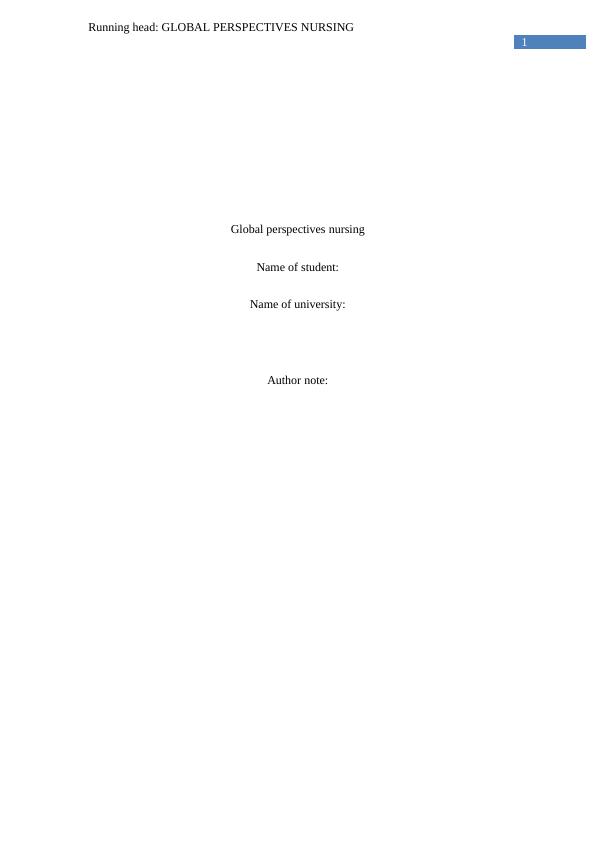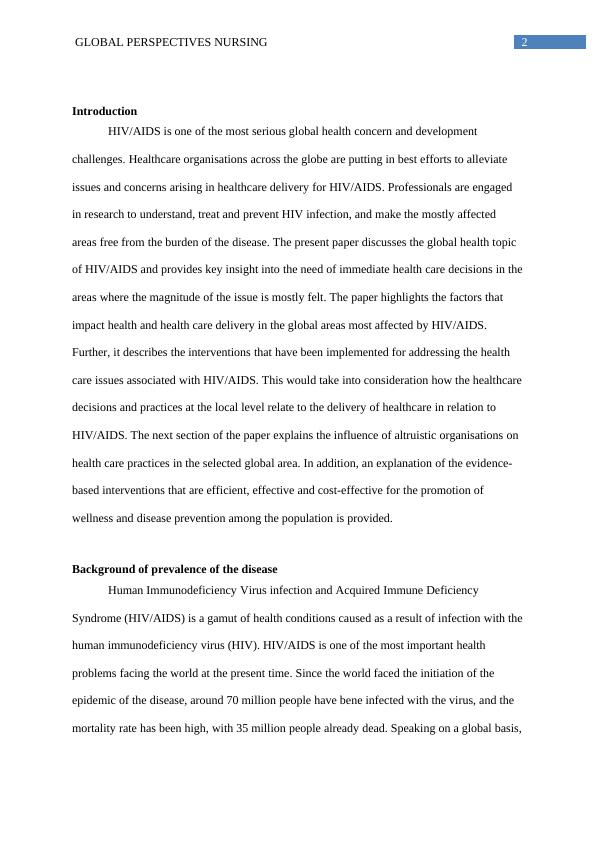Ask a question from expert
Global Perspectives Nursing Name of Student: University: HIV/AIDS
10 Pages2425 Words440 Views
Added on 2020-05-28
About This Document
GLOBAL PERSPECTIVES NURSING 1 7 GLOBAL PERSPECTIVES NURSING Global perspectives nursing Name of student: Name of university: Author note: Introduction HIV/AIDS is one of the most serious global health concern and development challenges. The present paper discusses the global health topic of HIV/AIDS and provides key insight into the need of immediate health care decisions in the areas where the magnitude of the issue is mostly felt. The paper highlights the factors that impact health and health care delivery
Global Perspectives Nursing Name of Student: University: HIV/AIDS
Added on 2020-05-28
BookmarkShareRelated Documents
End of preview
Want to access all the pages? Upload your documents or become a member.
Hiv Aids in Sub Saharan Africa Assesment Report
|12
|4694
|22
Communicable Diseases: Global HIV Epidemiology, Role of Agent, Host and Environmental Factors
|18
|5405
|228
Health Concerns and Issues for Sub-Saharan African Immigrants
|7
|1843
|76
Human Immunodeficiency Virus
|8
|1965
|190
HIV/AIDS PowerPoint Presentation 2022
|11
|679
|51
Comparison of HIV/AIDS Affecting Sex Worker sin USA and South Africa
|9
|2041
|34


